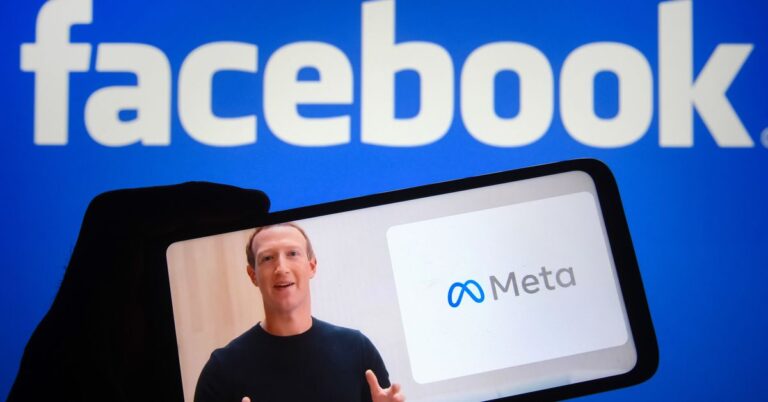
Customer communication is the foundation of your business’ success and a big part of customer service.
How you treat your customers directly impacts the development of your business. When you think about it, it is logical that when customers are satisfied (and have benefits from your products or services), they will keep coming back. This, in turn, helps you attract more customers and increase your revenue and brand recognition.
Businesses start communicating with their clients from the day they start operating. Back in the day, it was a simple, two-way communication between a provider and a customer.
Nowadays, with the development of technology, things have changed in many ways.
Modern businesses use multiple communication channels – from email to website and social media ads. Unfortunately, so many possibilities come with a great risk. In fact, the cost of poor customer communication for businesses can reach up to several billion per year!
To prevent such a scenario, pay attention to the following in order to create the ultimate customer communication strategy.
Omnichannel communication
Table of Contents
Nowadays, 74% of customers use various channels of communication in order to complete a single purchase. With this in mind, it is essential to provide a consistent experience for all of them. For example, if a client contacts you through your website, email, or your company’s social media, they should have the same experience, both in terms of content and quality.
Omnichannel communication is important in delivering a consistent experience for a customer, from pre-sales to post-sales and the process in between. Omnichannel customer communication delivers an improved customer service experience and keeps your business growing.
The important thing is to enable your customers to reach you easily. For example, you can add a call now button to your website – that’s how your clients will be able to reach you immediately. The aim is to use all of the possible channels of communication and to do that purposefully, with customer satisfaction as your primary goal.
The use of chatbots
Waiting time is listed as the main reason for the high customer bounce rate, with around two-thirds of online customers giving up on a purchase due to long waiting times. The frustration that comes with long waiting times can be reduced with the use of chatbots.
Chatbots automate the communication you have with your customers and can help you save a lot of time and resources by answering the recurring questions automatically. This means that your customers will get an immediate reply. And you’ll be able to do that 24/7 since chatbots can always be available on your website.
Most client issues can be solved with the help of a chatbot. Besides the direct effect on customer satisfaction, this is beneficial for your employees as well. With the help of a chatbot, you will provide space for your support and sales teams to use their time more efficiently. By reducing the time your agents spend on repeating simple questions, they will be able to give special care to customers that need it.
First-time customer communication
Customer loyalty is essential, and you are more likely to attract and retain loyal customers by teaching them about your products and services. Statistics are on your side: around a quarter of your customers who have a good first impression will most likely remain loyal for almost two years. Besides that, around 90% of them will spread the word about the good experience they had with their friends and family.
You can start by providing a warm welcome message that you can personalize for each of your clients and demonstrate how to get the most benefits from a service or a product that you are providing.
Many of your first-time visitors are not familiar with your business. Most probably, they have been searching for a solution to their problem and came across your website. In order to retain them, pay attention to cover the essential parts that the first-time customer interaction should have:
- Personalized welcome message
- Initial setup of product/service
- Demonstration of the features of your product/service
- Providing easy access to the knowledgebase
Successful onboarding can have a tremendous impact on customer loyalty, so you should craft educational, welcoming content. Don’t forget to personalize it and keep the human touch throughout the whole interaction with your customers.
Measuring customer satisfaction
Customer feedback is a critical input for your business, so you should take it seriously. To make the most of it, ask people for feedback from after each customer service interaction. That is how you will track your customers’ happiness and improve your service to suit their needs.
Many businesses realize the importance of satisfaction with customer service and use a couple of standardized ways to track them. One of the most common ways of measuring them is through surveys. Customers record their feedback by answering different forms of questions and provide you with real-time insights about their satisfaction.
The two most common methods are Net Promoter Score and Customer Satisfaction Score.
Net Promoter Score (NPS)
This score represents the likelihood of your customers recommending you. How to measure it?
- Start by preparing a survey with a scale from 1 to 10, where your customers respond with how likely they are to recommend your business to their friends and family.
- Mark the customers that respond with a score from 1 to 6 as detractors and the ones that respond with a number above 6 as promoters.
- Subtract the percentage of detractors from the percentage of promoters, and you will get an NPS. For example, if 60% of the respondents were promoters and 20% of them detractors, your NPS is 40.
Customer Satisfaction Score (CSAT)
This is a score that you can directly connect with the quality of your customer support. This way, you’ll know how well you’re taking care of your customers which will allow you to explore the potential issues in depth by asking additional questions.
CSAT surveys provide a quantitative metric that shows the level of satisfaction of your customers and more importantly, qualitative feedback that explains the reasons behind it. CSAT is easy to measure:
- First of all, create a simple survey and send it to your customers
- Collect the responses and sum of all positive ones.
- Divide the positive responses by the total responses that you have collected
- Multiply the result by 100
Be proactive
Are you only interacting with your customers when they reach out to you? If yes, it’s time to change that. Don’t worry about seeming too pushy. Statistics say that customers actually love proactive customer communication. Brands that have a habit of initiating contact with their customers are rewarded both in terms of customer retention and loyalty
Start by reaching out to your customers and engaging with them. This is one of the best ways to get timely feedback and help them solve the issues before they become serious.
This way, your customers will feel more connected to your business and help you improve.
There are many ways you can achieve that, from asking for feedback to keeping your customers up to date with any changes in your company. The only things left is choosing the communication channel and the ideal frequency of reaching out.
For example, if a visitor of your website adds an item to their basket without completing a purchase, you should take action. Proactively reach out to them, check if they are facing any problems and convince them to complete the purchase.
Note: make sure that your customers agree on this in the first place. You can do this by using a subscribe button.
Practices to avoid
When speaking with your customers, you should aim to maintain a concise and honest attitude and a friendly approach. As it is essential to cover the above-mentioned, there are behaviors that you should avoid while communicating with your customers:
Sounding generic. Make sure that you address your customers by name and add a human touch to all of your interactions. Start with small changes and see how they benefit your business.
Not being true to your word. Delivering on your promises is what sets you apart from the competition and creates the credibility of your business. You must ensure that the company can follow up on the promises made to customers.
Creating delays. If you keep potential customers waiting, they are less likely to convert to consistent, loyal ones. Chatbots and responsive salespeople are effective ways to solve this issue.
Being too pushy. Or absent. You should find a sweet spot in the frequency with which you communicate to your customers. The goal should be to reach out to them consistently but make sure that you have their permission to do so first.
Conclusion
Creating successful customer communication has a lot to do with satisfying your customer’s expectations and making them feel like a part of your business. Simply answering support requests will not help you reach this goal. You need to strategize customer communication practices to improve customer service and provide unique value to your customers.
The development of effective customer communication skills should become one of your company’s primary goals. This is how you’ll create a strong brand image, attract new customers and build a satisfying relationship with the existing ones. And when your customers are happy, your whole business thrives.






